I.T. Risk Mitigation Planning: What Your Business Should Know
by Stephanie Faris on Monday, May 14, 2018 12:00
Risk is part of doing business. When it comes to your company's technology, though, risk can be devastating.
If a natural disaster wipes out your data center, for instance, you could find entire aspects of your business are temporarily inaccessible.
You can plan for such an event in advance through risk mitigation planning, a process that protects your business by helping you document your plan.
Not only does this likely hold you accountable, but it also proves as valuable information to anyone considering investing in your business or working with you on a large project.
To create a risk mitigation plan for your business, you'll simply need to follow a few steps.
If you have an IT team in place, they can help with this, but you likely already know enough to work on each of these steps on your own.
Step One: Identify All Possible Risks
The first step in a technology risk mitigation assessment is to identify every possible risk your organization faces.
These risks could be everything from a devastating data breach to a natural disaster like a flood or a fire.
Don't worry about documenting the consequences of those risks or what you'll do to prevent them.
At this stage, you'll merely be working to think of every possible danger.
Step Two: Assess the Cost of Each Risk
With each risk comes costs. These aren't limited to dollars and cents.
A data breach will not only cost your business lost customers, but it will also impact other areas of operations, such as forcing you to alter the security you have in place.
Your marketing team would need to mobilize to repair any PR damage a breach brought to your business, costing them time and money, as well.
Step Three: Prioritize All Risks
Although no risk is a good one, there are varying degrees of damage each of them can do to your business.
List each risk in order of criticality, judging which will be most devastating.
A fire that displaces your entire office will likely rank higher than a server crash unless that server outage affects all your customers for an extended period of time.
Step Four: Implement and Monitor
In the final phase, you have your assessment document in place, allowing you to take action on each risk.
You'll need to schedule yourself to routinely check in on your risk assessment procedures to ensure you're truly protecting your business against each of them.
This step should also take you back to the beginning, where you regularly identify new risks and add them to your overall risk assessment document using the above steps.
Identifying the risks your business faces can help you determine the steps you need to take to keep it safe.
Once you've documented each of these risks, as well as its criticality and cost, you can then begin to decide which risks you should address first.
National Computer Warehouse Services provides risk mitigation assessments for each of our data center moves, as well as helping businesses reduce the chances of a costly data breach through hard drive disposal.
Contact us to find out how we can help your business meet its risk mitigation goals.
